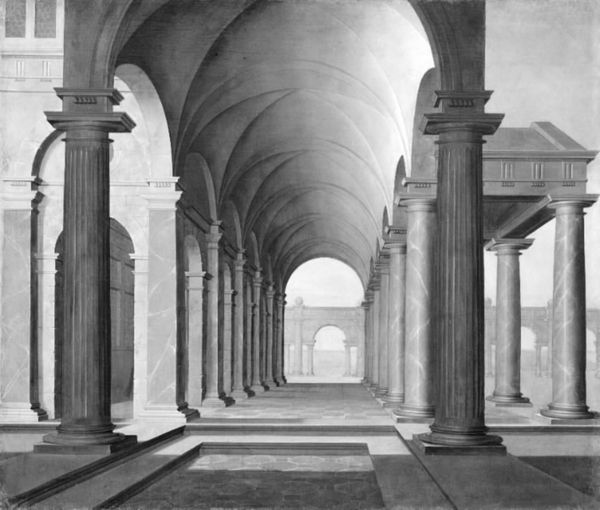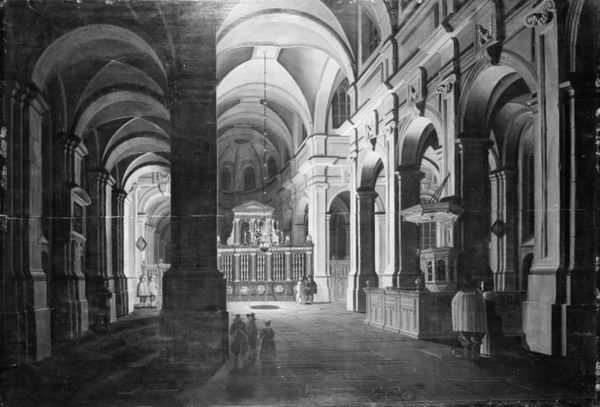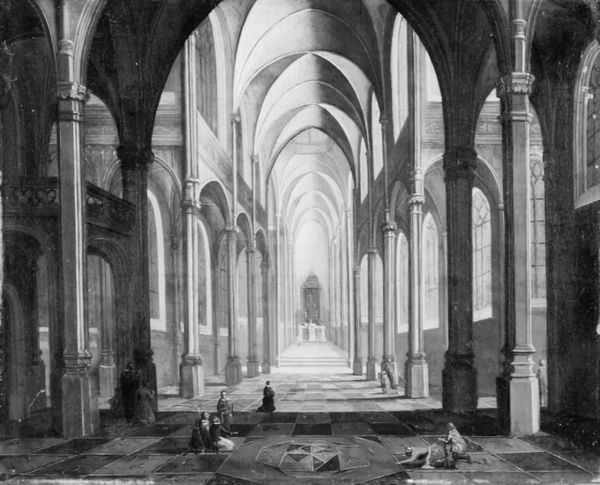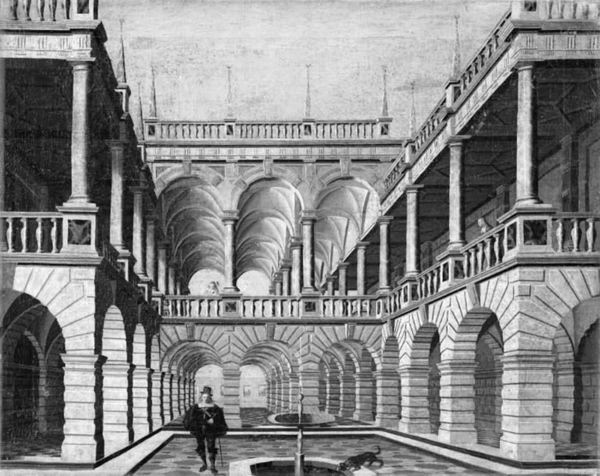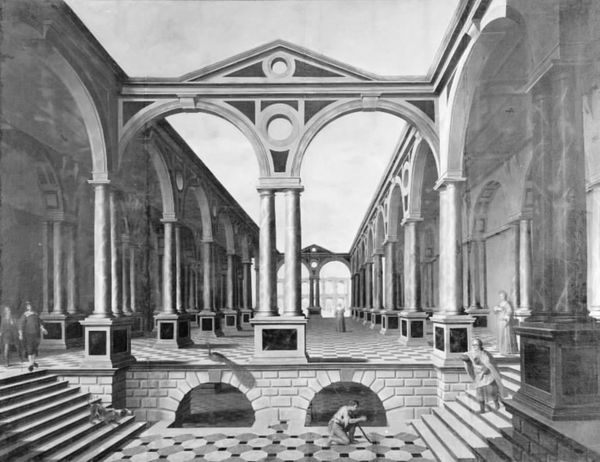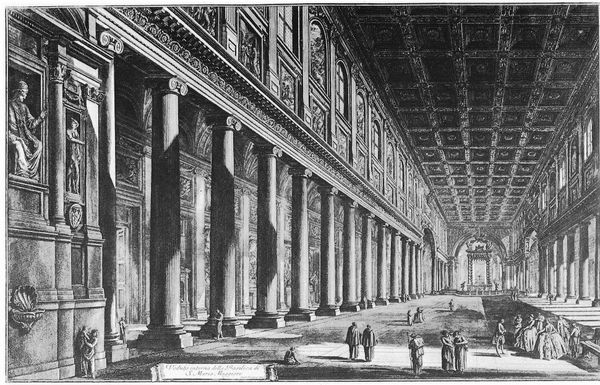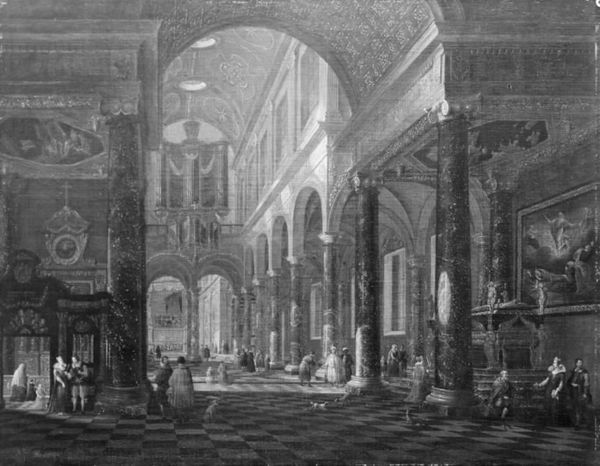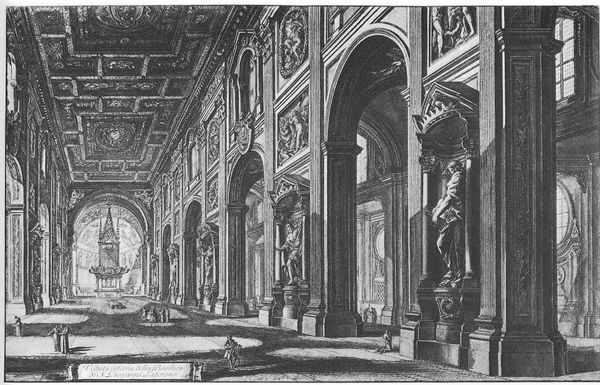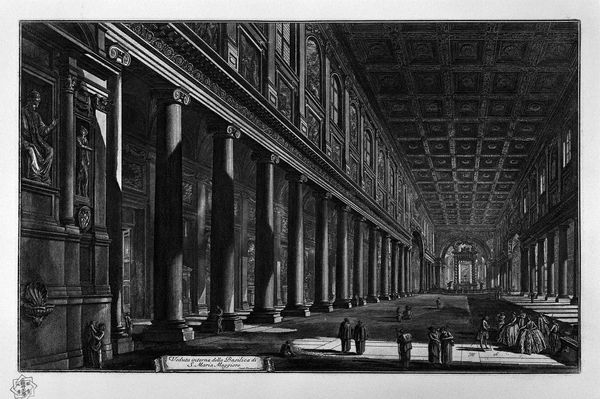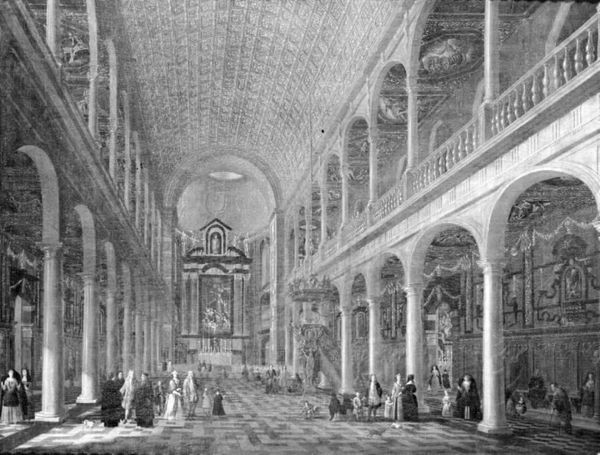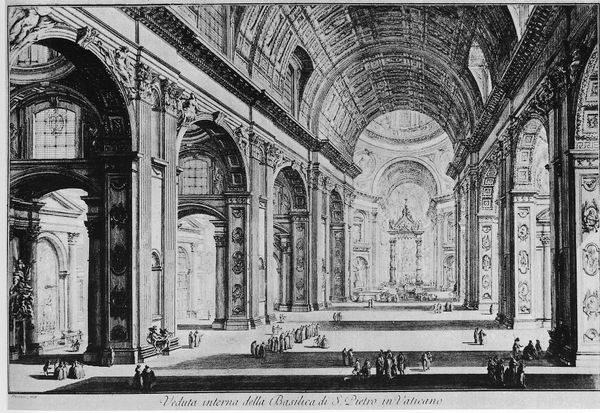
canvas
#
urban landscape
#
building study
#
building
#
sculpture
#
urban cityscape
#
historic architecture
#
canvas
#
unrealistic statue
#
man-made
#
historical building
#
statue
Dimensions: 59.5 cm (height) x 83 cm (width) (Netto)
Editor: This is Gabriel Engels's "Peristyle with Lucrece," made sometime between 1607 and 1654, rendered in oil on canvas. The architecture completely dominates the figures; it's almost unsettling in its scale and rigid geometry. How would you interpret this interplay between the setting and the figures, considering the period? Curator: It's interesting that you notice that tension. During the 17th century, there was a rising interest in both history and the role of art as a moral compass, especially for public life. Paintings of historical scenes, and indeed this Roman setting itself, frequently became arenas where discussions about power, justice, and citizenship played out. Editor: So, Lucrece, a figure of virtue who committed suicide after being assaulted, placed within this elaborate architecture…what is Engel's potentially trying to say about the Roman society and, possibly, its impact? Curator: Exactly. Consider that these paintings were often commissioned by wealthy patrons or institutions. The choice of subject matter, the way it's depicted, all speak to the values and anxieties of the time. Think about it – what does it mean to depict a virtuous woman, assaulted, in the heart of a Roman building of such stature? Is it highlighting the dangers lurking beneath even the most civilized societies? Is this also highlighting male domination and rape as a tool for war? Editor: It's definitely not a flattering portrayal! It pushes me to consider these historical scenes less as simple stories and more as critical commentaries on power dynamics. Curator: Precisely! These images functioned within the broader context of political and social debates. That is, after all, part of the image's staying power and ability to communicate, especially across the passage of time. We look back to these earlier visual cues and interpretations and find relevance even today. Editor: I'll definitely be examining similar works through this socio-political lens from now on. Thank you for helping shed light on its potential layers.
Comments
No comments
Be the first to comment and join the conversation on the ultimate creative platform.
